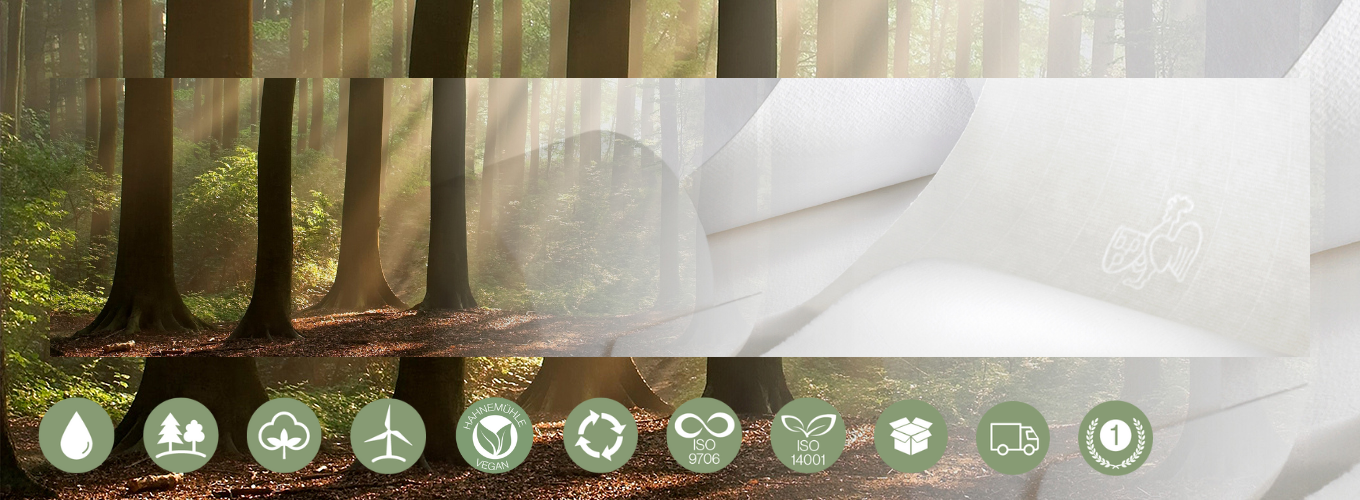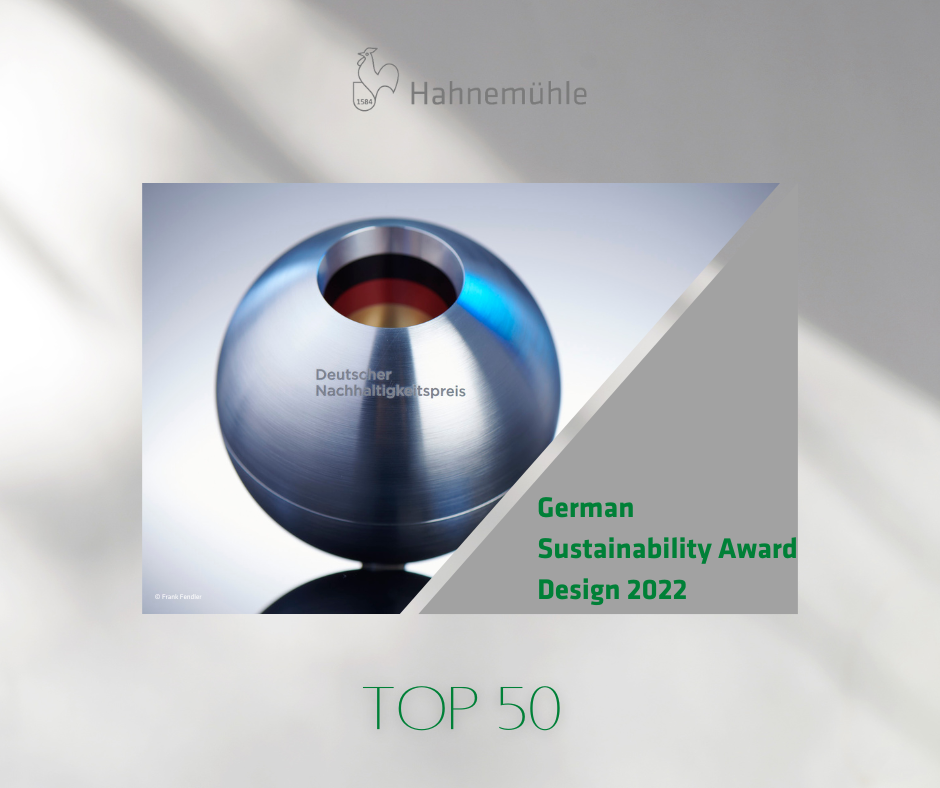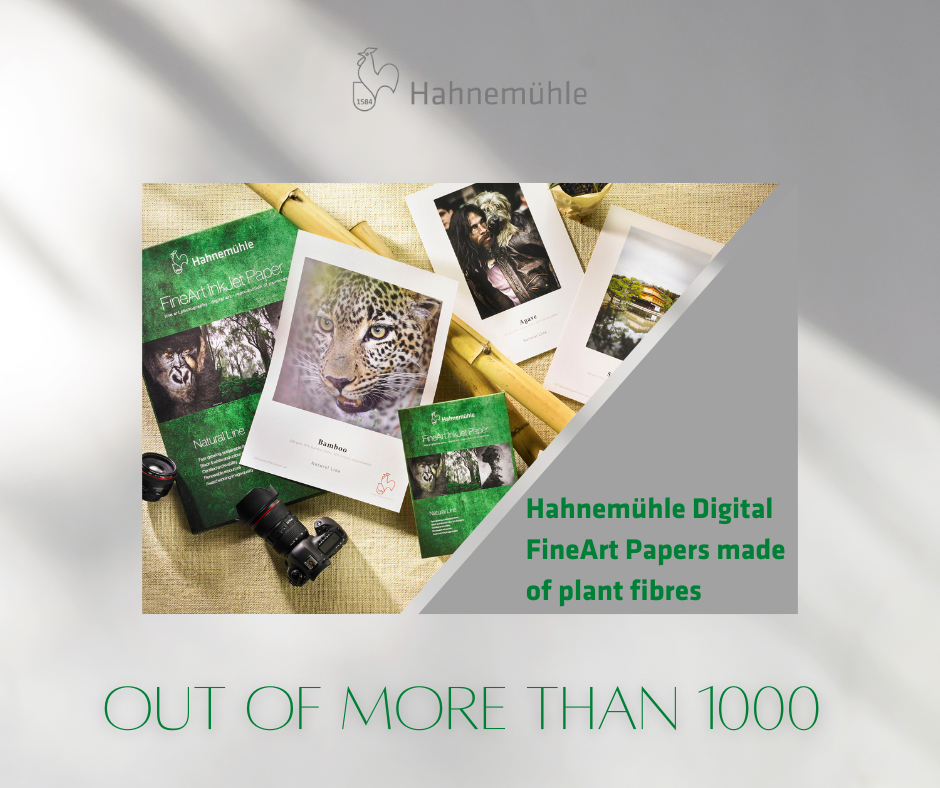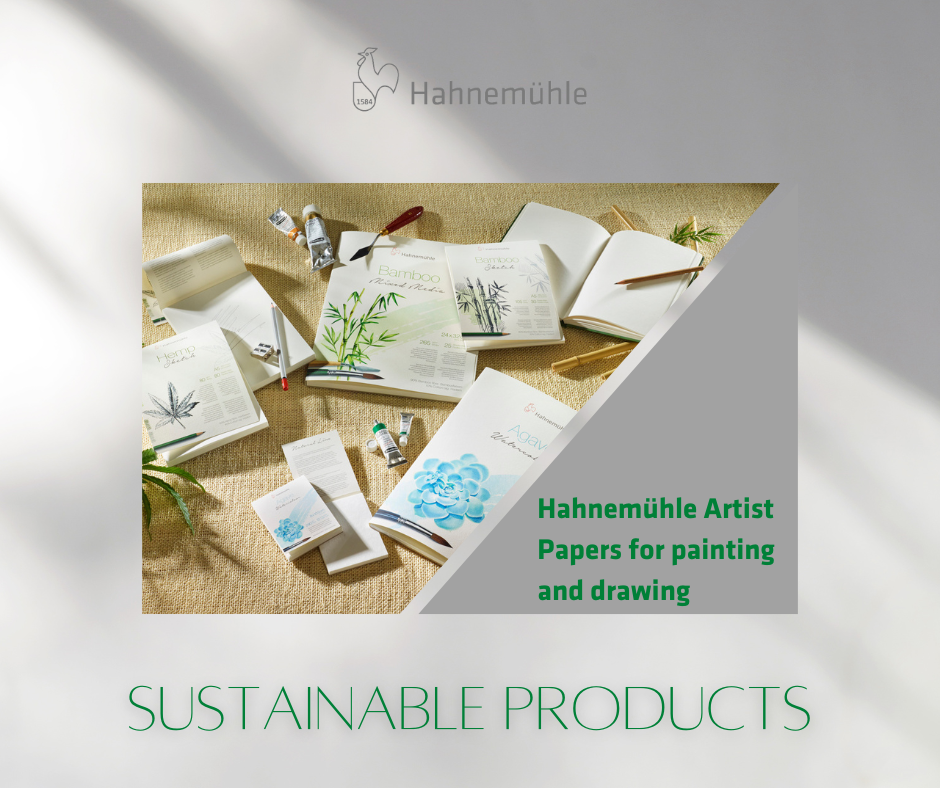

We are proud of the nomination of our plant-based papers at the German Sustainability Award 2022 out of more than 1000 sustainable designs and products.

Our Digital FineArt Inkjet papers for high-quality inkjet printing of exclusive photographs, digital art or art reproductions.

Our classic artist papers inspire environmentally conscious creatives to sketch, draw or watercolour and collage.
Water
The water we use to produce our exceptional FineArt and filter papers comes straight from the underground springs in the Solling hills and is characterised by its particularly high level of purity and softness. It is drawn from the middle of a unique natural landscape, which is home to an array of animals and plants and doesn’t need to be chemically treated once fed back into the nearby river Ilme. The paper-machine circuit in which we produce our papers is therefore closed as much as possible. The waste water is free from chemical cleaning agents, biocides and preservatives and is returned to nature, in a strictly controlled process.
Raw materials
Our fibres are sourced exclusively from primary fibres. Here, we use lignin-free cellulose, sourced from deciduous and coniferous trees that grow in sustainably managed forests and are FSC- or PEFC-certified. The linter types also play an essential role. Linters are fine fibres that cling to the seed of the cotton plant and occur as a by-product of the textile and oil industries. We also keep an eye out for and, in some cases, are already using, fast-growing, renewable cellulose alternatives, e.g. bamboo, hemp and agave, which help conserve resources.
Energy
We cover our entire electricity requirements through renewable sources, such as wind, water and solar energy. This enables us to sustainably reduce our CO2 emissions. We produce our own steam and heat using natural gas. Thanks to our waste-heat recovery system, the emissions from our furnace are considerably below the legal limits, by more than 40%.
All Paper are vegan
Environmental Management
Highly resistant to ageing
All Hahnemühle papers meet the high requirements of ISO standard 9706 for ageing resistance of paper and extreme light fastness. In combination with museum conditions and highly lightfast and acid free artist materials, artworks will last for hundreds of years, without loss of colour.
Recycling
We believe that sustainable resource management also includes recycling our own production waste and scrap materials which we then return to the production cycle or, if that isn’t possible, hand over to other waste processors.
We always choose recycled material for our products on the condition that it will not compromise their quality – for example, cardboard boxes and tubes for our paper rolls.
Hahnemühle has recently been certified for all its sustainability measures and its environmentally sensitive actions according to the ISO 14001 guideline for environmental management.
Packaging
We are always trying to think of more environmentally friendly ways to package our paper and are quick to implement any useful new measures. For example, we fill our transport boxes using packing peanuts made from 100% biodegradable cornstarch, while our packing tape and delivery-note envelopes are both made from paper instead of plastic. We are also working on alternative protective films in which to package our paper to ensure it is still in great condition when it reaches our clients. These are all steps we’re taking in our constant effort to improve sustainability and thereby conserve our resources.
Transport
Distributing our paper to more than 130 countries across the world is a considerable challenge. Our aim is to minimise any impact made by necessary transport measures on the environment and climate. The majority of our products are transported by ship or rail. Our central logistics site is in Göttingen in southern Lower Saxony, where we pool our shipments for transportation and make optimum use of our means of transport. We are especially pleased that our logistics partner has been recognised with an award for sustainability and is therefore supporting our efforts to protect the climate.
Our Commitment - Green Rooster
The red rooster is the well-known Hahnemühle trademark; with the green rooster, our own Green Rooster initiative, we support regional, national and international environmental protection projects as well as social and civil initiatives. Hahnemühle is actively involved in environmental and climate protection within the framework of reforestation, species protection, environmental education programmes and much more. In doing so, we are guided by the 17 Sustainable Development Goals of the United Nations and the Gold Standard for environmental protection projects. And why do we do this? To protect our habitat and yours. See how wonderfully green it is here and learn more about our Green-Rooster-Initiative ...
